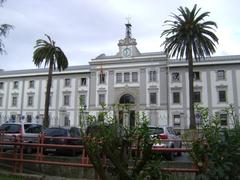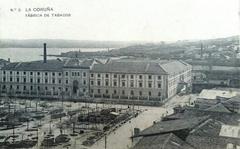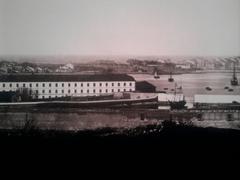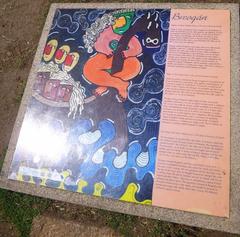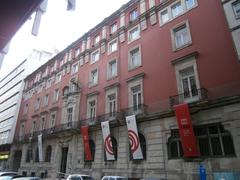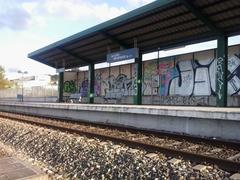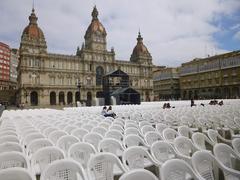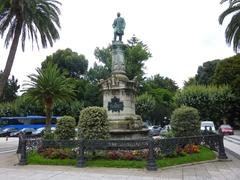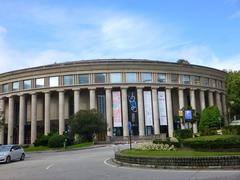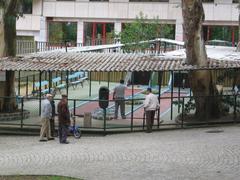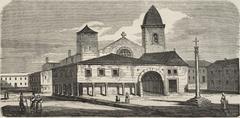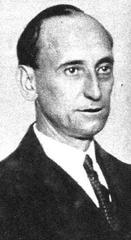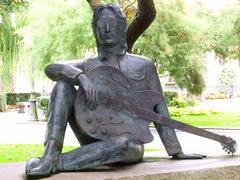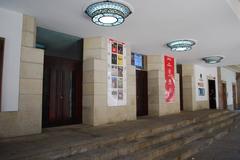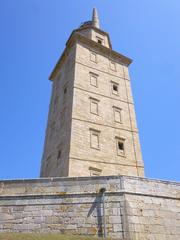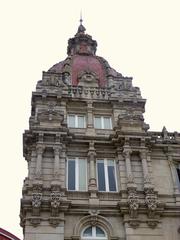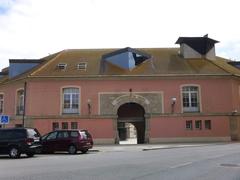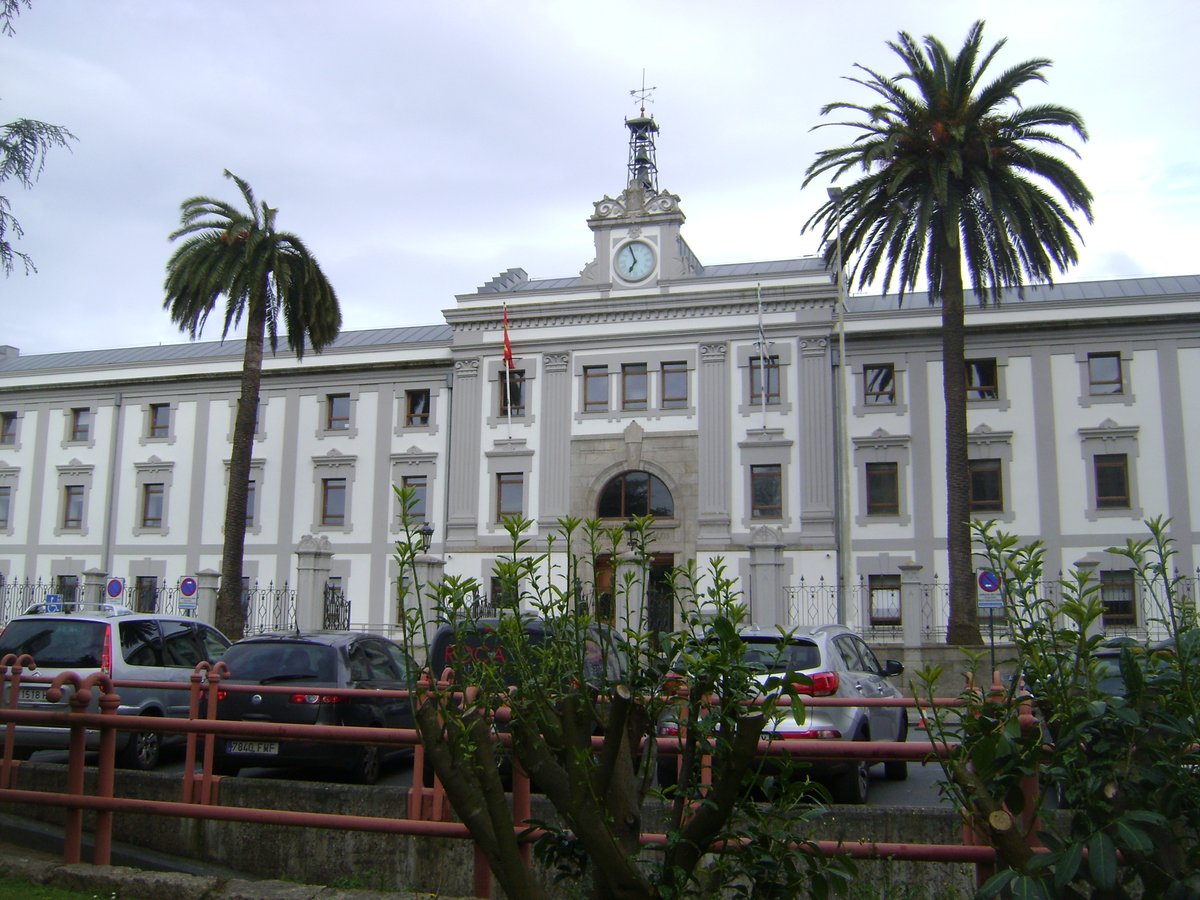
Tobacco Factory of La Coruña: Visiting Hours, Tickets, and Historical Significance
Date: 15/06/2025
Introduction
The Tobacco Factory of La Coruña (Fábrica de Tabacos de La Coruña), locally called “La Palloza,” is a landmark of Galicia’s industrial and social history. Founded in the early 19th century atop an 18th-century neoclassical warehouse, it became a driving force in A Coruña’s economic and urban development. The factory is closely linked to the empowerment of women, with its workforce dominated by the “cigarreras”—female workers who were pivotal in early labor movements. Today, while its interior serves as a judicial complex with limited public access, its imposing façade remains a powerful symbol of the city’s evolution and collective memory. This guide details the factory’s history, architecture, visitor information, and its ongoing cultural relevance (elespanol.com; visitcoruna.com; lavozdegalicia.es).
Table of Contents
- History and Origins
- Industrial and Social Impact
- Architectural Evolution
- 20th Century: Modernization and Decline
- Post-Industrial Transformation
- Visitor Information
- Frequently Asked Questions (FAQ)
- Conclusion
- References
History and Origins
Foundation and Early Years
The Tobacco Factory’s roots trace back to 1790, constructed as a neoclassical warehouse by architect Antonio de Mesa y Álvarez. Initially, it functioned as a provisioning depot for Spain’s maritime postal service, reflecting A Coruña’s strategic role in transatlantic trade (upandtravel.com).
By 1802, the building was adapted for tobacco production, officially opening as a factory in 1804. This marked the beginning of its central role in A Coruña’s industrialization (es.wikipedia.org).
Industrial and Social Impact
Economic Growth and Workforce
The Tobacco Factory quickly became a leading employer, particularly of women. By the mid-19th century, hundreds of cigarreras worked within its walls—a workforce that swelled to over 2,500 by the early 20th century, making it one of Spain’s largest tobacco factories (lavozdegalicia.es).
Labor Movements and the Cigarreras
The cigarreras were instrumental in the early labor movement. The first documented strike occurred in 1857, driven by poor working conditions and concerns over mechanization. Their activism led to the founding of the Unión Tabacalera in 1916, which improved workers’ rights and established support institutions like the Casa das Cigarreras (elespanol.com).
The factory’s social importance was immortalized in literature, notably in “La Tribuna” by Emilia Pardo Bazán, highlighting themes of gender, class, and industrial life (es.wikipedia.org).
Architectural Evolution
Neoclassical Origins and Modernist Additions
The Tobacco Factory’s architecture is characterized by neoclassical symmetry, solid granite walls, and rhythmic window placement. In 1908, the façade was redesigned to face Plaza de la Palloza, and in 1924, perimeter fencing was completed to accommodate the changing urban landscape (elespanol.com). Later additions incorporated industrial features such as cast-iron columns and spacious interiors for tobacco processing, while preserving artistic details like wrought-iron staircases and patterned tiles (visitcoruna.com).
20th Century: Modernization and Decline
War, Mechanization, and Closure
During the Spanish Civil War, the factory was seized by military authorities, but resumed operations soon after due to tobacco’s importance. Technological improvements in the 20th century boosted output, yet the workforce remained predominantly female, with jobs often handed down through generations (lavozdegalicia.es). In 1999, Tabacalera’s merger into Altadis led to the factory’s closure in 2002 (es.wikipedia.org).
Post-Industrial Transformation
Heritage Preservation and New Civic Role
Following closure, the building was carefully restored and converted into the seat of the Provincial Court and other judicial offices. This adaptive reuse preserved its architectural integrity while supporting contemporary urban needs (operalatribuna.com; upandtravel.com). The factory’s story remains central to A Coruña’s identity, representing industrial heritage, women’s empowerment, and social change.
Visitor Information
Visiting Hours
- Exterior Viewing: The façade and plaza are accessible at any time.
- Interior Access: Restricted due to judicial functions. Occasional guided tours are offered during heritage events—check with A Coruña Tourist Office for updates.
Tickets and Entry
- General Entry: No ticket required for exterior views.
- Guided Tours: Free or nominally priced during special events; advance booking may be required.
Accessibility
The plaza is pedestrian-friendly and accessible for visitors with mobility challenges. Interior access arrangements can be made during special tours.
Getting There and Nearby Attractions
- Location: Central A Coruña, near Plaza de la Palloza.
- Transport: Accessible by public transport, walking, or taxi.
- Nearby Landmarks: Tower of Hercules, Old Town (Ciudad Vieja), Avenida de la Marina, and Praza de María Pita (broganabroad.com; galiciaguide.com).
Guided Tours and Events
Heritage organizations occasionally organize guided visits focusing on the building’s history and the legacy of the cigarreras. These are excellent opportunities to learn about the factory’s social and architectural significance.
Frequently Asked Questions (FAQ)
Q: Can I visit the interior of the Tobacco Factory?
A: Regular public access is not available, but guided tours are sometimes organized during cultural heritage events.
Q: Is there an entry fee?
A: No fee for exterior viewing; guided tours may be free or require booking.
Q: How do I get there?
A: Centrally located, it is easily reachable on foot, by bus, or by taxi.
Q: Is the site accessible for people with disabilities?
A: The exterior and plaza are accessible; interior tours provide accommodations when available.
Q: What else can I see nearby?
A: Explore the Tower of Hercules, María Pita Square, Avenida de la Marina’s glass galleries, and the Old Town.
Conclusion
The Tobacco Factory of La Coruña is a landmark that encapsulates the city’s shift from industrial hub to modern urban center. Its history reflects the economic, social, and cultural currents that have shaped Galicia, particularly the empowerment of women and the rise of organized labor. While the interior is now dedicated to civic functions, its striking exterior and the stories it holds remain integral to A Coruña’s heritage.
To enrich your visit, check for guided tours and cultural events, and explore the surrounding historic cityscape. For updates, download the Audiala app and consult official tourism resources.
References and Useful Links
- La Fábrica de Tabacos de La Coruña: Icono coruñés elevado a lírica (elespanol.com)
- Fábrica de Tabacos (La Coruña) (es.wikipedia.org)
- Fábrica de Tabacos en plena producción (lavozdegalicia.es)
- La Antigua Fábrica de Tabacos: La Tabacalera de A Coruña (upandtravel.com)
- Audiala A Coruña Guide (audiala.com)
- Visit A Coruña Guide (visitcoruna.com)
- La Coruña Visitor Guide (TripSavvy)
- Bonfires of San Juan in A Coruña (Spain.info)
